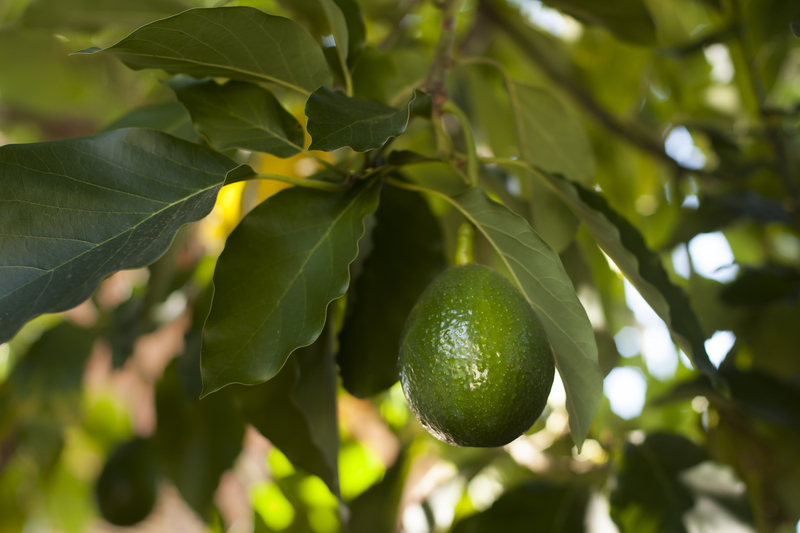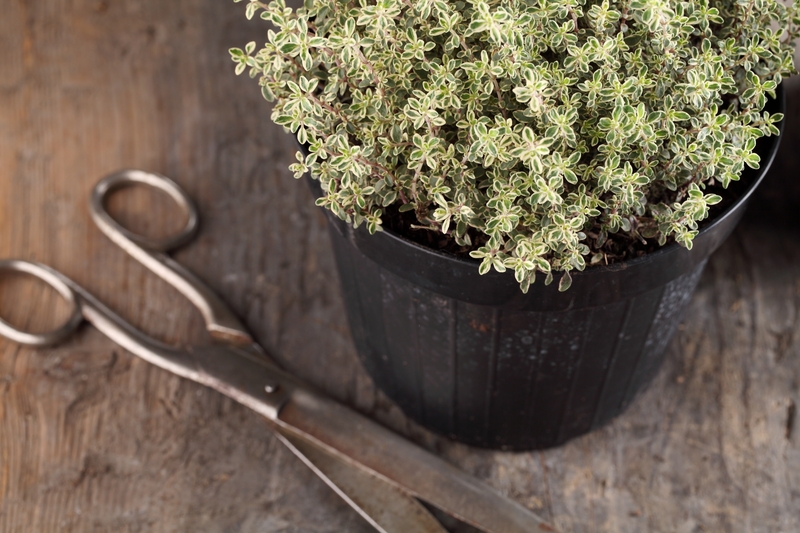A Step-by-Step Approach to Renewing a Weedy Garden
Posted on 30/05/2025
A Step-by-Step Approach to Renewing a Weedy Garden
Is your garden overrun by weeds and seemingly out of control? Don't worry--renewing a weedy garden is completely achievable with a solid plan and persistence. This comprehensive guide will walk you through a step-by-step approach to revitalizing a weed-choked garden and transforming it into a thriving, beautiful space. Whether you're a beginner or experienced gardener, following these strategies will help you reclaim your outdoor oasis and prevent weeds from taking over again.

Why Do Gardens Become Weedy?
Before discussing the solution, it's helpful to understand why weeds dominate certain gardens. A garden may become overwhelmed by weeds due to neglect, compacted soil, improper watering, or simply because certain weeds thrive in local environmental conditions. Weeds can quickly outcompete desired plants for nutrients, sunlight, and space. Recognizing the causes helps you to address not only the visible symptoms but also prevent future infestations.
Factors that Lead to Weedy Gardens
- Poor soil health - Lacking nutrients favors hardy weed species over desirable plants.
- Lack of mulching or ground covers - Bare soil is an open invitation for weed seeds to settle and germinate.
- Infrequent maintenance - Neglecting the garden allows weeds to take hold and multiply:
- Ineffective weed control methods - Some gardeners may not remove the entire root system.
- Spread from nearby areas - Weeds can blow in from neglected neighboring lots or wild areas.
Preparation Is Key: Assess Your Overgrown Garden
The first step in renewing a weedy garden is to assess the current state of your outdoor space. Walk around and take note of these:
- The types of weeds present (broadleaf, grassy, perennial, annual, etc.)
- Any remaining desired plants or features
- Soil condition (dry, compacted, sandy, clay, etc.)
- Extent of overgrowth
- Sunlight and moisture levels
Take photos and make a sketch if necessary. This assessment will guide you when deciding how aggressively to tackle the weeds and how to plan your rejuvenation process.
Step 1: Clear the Weedy Overgrowth
The most immediate task is to remove as many weeds as possible. Here's how to do it efficiently:
1.1 Manual Weed Removal
- Gloves and tools: Wear thick gloves, and use a garden fork, trowel, or hoe for stubborn roots.
- Focus on roots: Try to extract the entire root system, especially with perennial weeds (e.g., dandelions, dock, bindweed), to prevent regrowth.
- Work in sections: Divide the garden into manageable areas so you don't get overwhelmed.
- Dispose properly: Do not compost tough perennial weeds or those with seeds, as they may survive and re-infest your compost pile.
1.2 Smothering
- Cover with cardboard or thick newspaper: This blocks sunlight and kills weeds over several weeks.
- Weigh down covers: Use rocks or mulch to hold down your chosen smothering material.
- Tip: This technique is suitable if you don't have time for complete manual removal or want to add organic matter to the soil.
1.3 Using Organic Herbicides
- Vinegar or citrus-based sprays: These non-toxic options can help with small-scale spot treatments.
- Boiling water: Pouring boiling water directly on weeds is effective but non-selective (it will kill anything it touches).
Avoid chemical herbicides where possible, as they can harm beneficial soil life and your healthy plants.
Step 2: Enrich and Renew the Soil
Once the majority of weeds are cleared, focus on restoring the health of your soil to support robust garden growth and limit weed return.
2.1 Soil Testing
- Test for pH, organic matter, and drainage.
- Amend the soil based on findings--add compost, aged manure, or peat moss for organic matter; lime to raise pH; or sulfur to lower it, if necessary.
2.2 Loosening and Aeration
- Double dig: For highly compacted soil, double digging improves aeration and root penetration.
- Use a garden fork to loosen compacted areas.
2.3 Adding Organic Matter
- Compost: Spread 2-3 inches across the surface and work it in.
- Manure: Well-aged manure boosts fertility; avoid fresh manure, as it can burn plants and introduce weed seeds.
Nourished, living soil helps your desired plants outcompete weeds naturally.
Step 3: Plan Your Garden Layout for Success
Thoughtful design is crucial to preventing weed recurrence and ensuring long-term beauty. Devote time to planning before planting.
Consider These Elements When Planning Your Garden Renewal
- Plant spacing: Opt for dense planting layouts so that mature plants will shade out weed seedlings.
- Include groundcovers: Low-growing plants or living mulches cover bare soil, making it difficult for weeds to establish.
- Choose the right plants: Select vigorous, healthy varieties adapted to your local climate and soil conditions.
- Pathways and edging: Use gravel, wood chips, or pavers to define beds and create barriers against encroaching weeds.
- Mulch application: Plan for organic mulch like wood chips, straw, or shredded leaves to maintain weed suppression between plants.
Step 4: Plant and Mulch for Weed Prevention
After prepping your garden beds, it's time to install your chosen plants. Follow these tips for the best results:
- Pre-water the area before planting to reduce transplant shock and make it easier for roots to establish.
- Place taller plants at the back of beds and shorter plants/living mulches at the front or edges.
- Maintain minimum recommended spacing to avoid overcrowding yet allow quick canopy closure.
The Power of Mulch in Garden Renewal
- Mulch acts as an effective physical barrier between weed seeds and sunlight.
- Use 2-4 inches of organic mulch such as shredded bark, straw, or leaves around your plantings.
- Keep mulch a few inches away from plant stems to prevent rot.
- Top up mulch layers at least once every year or as needed to maintain coverage.
Organic mulch decomposes over time, further enhancing soil quality while continually choking out weeds.
Step 5: Implement a Consistent Maintenance Routine
Renewing a weedy garden is only as effective as your ability to maintain it. Early intervention will ensure that weeds don't get the chance to spread again.
Key Garden Maintenance Tips
- Weed regularly: Spend a few minutes weeding each week. It's much easier to pull young, small weeds than established ones.
- Inspect after rain: Wet soil makes it easier to remove weeds entirely, roots and all.
- Monitor mulch: Replenish and fluff mulch as needed to keep it thick and effective.
- Deadhead and prune plants: Healthy, well-maintained plants are better weed competitors.
- Edge garden beds: Re-cutting crisp edges creates a physical and visual weed barrier.
Common Mistakes to Avoid When Renovating a Weedy Garden
Avoid these errors to ensure a smooth garden renewal process:
- Skipping soil improvement: Neglecting the soil leads to recurring poor plant health and easier weed takeover.
- Overusing landscape fabric: It can prevent water and nutrients from reaching plant roots and eventually gets clogged with weed seeds on top.
- Leaving weed roots behind: Many perennial weeds can regrow from even small root fragments.
- Neglecting follow-up care: Allowing tiny weeds to mature will return your garden to its weedy state in no time.
Alternative Methods for Large or Heavily Weedy Plots
If you are dealing with an extremely overgrown or neglected garden, consider these additional techniques:
Sheet Mulching (Lasagna Gardening)
- Layer cardboard/newspaper over entire area, followed by compost, manure, and mulch.
- Let it decompose for several months before planting. This kills existing weeds while enriching the soil.
Solarization
- Cover the area with clear plastic sheeting during the hottest months. Sunlight heats the soil, killing weed seeds and soil pathogens.
- Leave the plastic in place for 4-6 weeks for best results.

Frequently Asked Questions About Renewing Weedy Gardens
Is it better to pull weeds or use a tiller?
Hand removal (including entire roots) is best for perennial weeds and for gardens with many desirable plants. Tilling can chop up weed roots, making some weeds multiply. Use a tiller only for open spaces where you plan to replant immediately and follow up with mulch.
How can I keep weeds from returning after clearing them?
The combination of dense planting, regular mulching, and consistent maintenance is your best defense against weeds. Address weak areas promptly, and never let weeds go to seed.
Can I reuse soil from a weedy garden?
Yes, provided you remove perennial weed roots and enrich the soil with compost and amendments. Solarization can help reduce the weed seed bank if major infestations are present.
Conclusion: Your Guide to a Weed-Free, Beautiful Garden
By following this step-by-step approach to renewing a weedy garden, you're investing in the long-term beauty and productivity of your outdoor space. Remember:
- Begin with thorough assessment and clearing
- Revitalize your soil with organic amendments
- Use thoughtful design and spacing
- Rely heavily on mulch and groundcover
- Adopt a proactive, consistent maintenance plan
With patience, effort, and the right techniques, even the weediest plots can be transformed into gorgeous, flourishing gardens. Your hard work today paves the way for a healthy, welcoming landscape tomorrow. Happy gardening!

